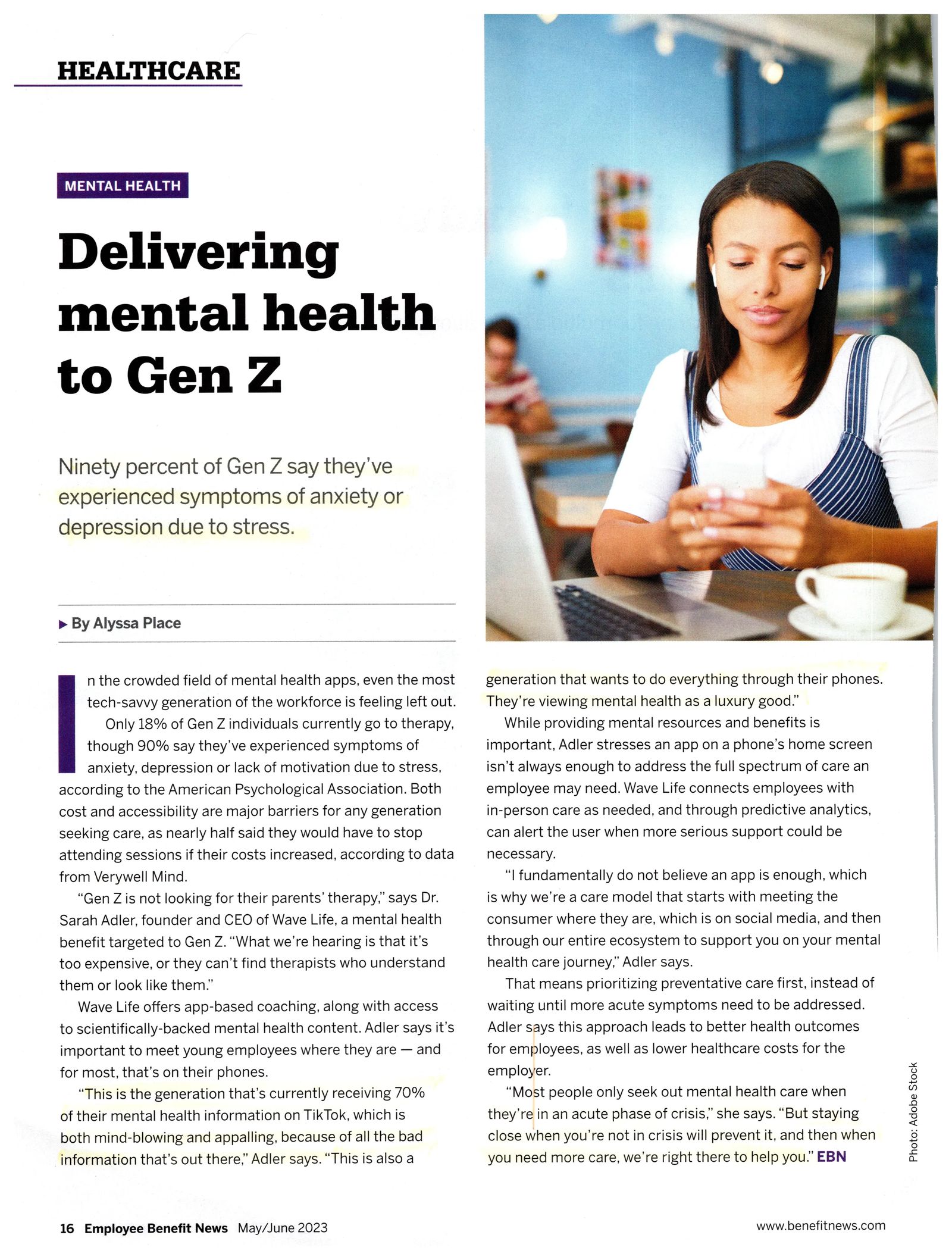
Back to Basics – Again - Beyond Humanizing the Worker's Compensation System
may 8, 2023 – Michael Marsh
My schedule once again has me out of the office, this time in Florida, for the national meeting of the National Association of Independent Insurance Adjusters (“NAIIA”). http://www.naiia.com . National meetings amongst hundreds of devoted, caring professionals in the claims space inevitably moves from the typical comparison of weather, travel arrangements and family updates to...drum roll please...the philosophical component of handling workers' compensation claims. This trip from Montana to Florida did not disappoint.
Recapping, I began speaking on the topic of holistic handling of workers' compensation claims back in the 1980's. My view of the system was not positive. Why? It seemed that the injured / recovering worker was not 'involved' in the process. They were the entire reason for the claim to exist in the first place; it was their injury that pushed the "On Button" for the workers' compensation bureaucratic claims process to begin. And yet, the process on the 'inside' seemed to confine its 'concerns' to the percentage of first 3-point contacts made on time, percentage of diary entries made and completed on time vs late, closing ratios, notations about subrogation potential, and many other items amongst the many metrics used within the process to measure "success".
But was this real, 'actual', success. I asked myself as I read through and audited thousands of files: Where is the substantive interaction with the recovering worker? Did anyone ever get authority to and then speak to the worker's spouse about how this situation was impacting the family? What were the highest priorities of the worker following the injury? What were the worker and their family's questions of or fears for the workers' compensation system / process? What was the claims professional's action plan to not only achieve claim closure (typically documented by a finding of Permanent and Stationary or Maximum Medical Improvement), documenting any medically indicated Permanent Partial Impairment and calculating the final benefits due, if any. Similarly, what was the worker's understanding and time expectations of the process required and length of time necessary to bring them to the EXIT door, where they could reclaim their 'regular' life post-workers' compensation claim? Or was, at seemed to be documented, an exercise by the computer user (erstwhile referred to as adjuster or examiner) of clicking on all the right boxes at the right times to meet certain quotas?
My many thousands of claims reviewed and audited showed notations of or metrics around engaging with the recovering worker or their family almost non-existent. No where. At best, very rarely there might be a note by the Examiner or Adjuster on one of these topics. And then, universally these topics were initiated by the worker or their family when questioning the claims professional.
So in essence, we (as an industry) have been delegating the responsibility of navigating a complicated system based upon a pile of acronym filled statutory language to workers who in many cases are going through the worst period of their lives.
And some in the industry have the (insert testosterone filled body part here) to complain about high litigation rates and costs. Seriously? It is us in the claims portion of the workers' compensation industry that have crafted and molded a system that was designed to be primarily self-administering into one that is confusing, confrontational and intimidating to almost all non-industry trained non-acronym speakers. Add English as a second language to the mix and the complications multiply exponentially.
How have we crafted and molded this system? I've heard some say that we are simply fulfilling the needs and expectations of the employers and insureds. We provide "Best Practice" documents and "Client Service Instructions" to those involved in the process. IT is claimed that the employers and insureds agree. But do they know what they are agreeing to? What the long term ramifications of these documents may be?
Seven years ago I reported to the Montana Governor's Labor Management Advisory Council (June 15, 2016):
---------------------------------------------------------------------------------------------------
Claims handling issues for discussion at the June meeting of the Montana Labor Management Advisory Council:
- Injured worker is 3 to 5 weeks past the time of injury with no contact from the insurer or examiner,
- Injured worker reports that examiner does not answer phone calls or return phone messages,
- Request for approval of surgery or other medical benefit is not provided before medical procedure is scheduled,
- Dealing with a difficult or combatant injured worker,
- Personality conflict between injured worker and examiner, and
- Change in treating physician, injured worker reports they the insurer will not let them see the provider they want.
Further, there are a number of drivers outside of the workers' compensation system that will likely remain or continue to escalate which have a direct impact upon the MT WC process. These include:
- The aging workforce,
- An increase in the range and number of premorbid conditions present in today’s workforce,
- Societal expectations that exist with the influence of the internet, medical, legal and drug advertising and reality television shows leading to expectations of simple, immediate gratification, in many cases well beyond the ability of the workers' compensation system to respond,
- A limited number of individuals who approach workers' compensation claims with a “if I yell and complain loud enough I will get what I want / need” approach, and, perhaps equally or more important than all other issues
- The physical separation of the recovering worker from the claims examiner or adjuster. *(Little did I know at the time the acceleration this trend would have with the 2020 - 2022 pandemic intervention)*
We in the WC claims industry have little if any ability to control these issues. As time passes, societal needs and expectations consistently change. That is natural and has been taking place for decades. In our operation since the late 1940’s, we do our best to honestly address these issues on a case by case basis. Every claim is different. Every injured worker is different. A set of “best practices” will not now or ever remedy the essential differences that we face when administering workers' compensation claims. Passing legislation or burdensome governmental rules will not remedy these rare but ever-present issues.
In our claims operation, which operates exclusively in the state of Montana, we simply embrace the concept that every claim, worker and situation is unique, something that is contrary to the “best practices” movement. We in fact have chosen to push back on the “best practices” movement in the WC claims industry, favoring a Back To The Future, person to person approach. Because we feel so strongly about this part of what we do, we applied for and were granted a federal registered trademark, “Redefining Best Practices®”.
---------------------------------------------------------------------------------------------------

Fast forward to 2023. Humanizing the workers' compensation claims process has become a consistent part of the dialog when the system is discussed. Speakers at conferences, executives in podcasts, myriad bloggers have moved the discussion towards INCLUDING the recovering worker IN THE PROCESS. This is referred to as engagement, inclusion and a variety of other words. Regardless of the words used, the subject is on the topic that we have talked about for decades: An unconfused, engaged, interested and non-combative recovering worker recovers faster and more completely. They place their focus and energies not upon their dislike or distrust of the system but spend their energies focused upon their physical recovery and getting their life back.
A team of professionals that are engaged in the health, satisfaction and safety of those that they serve and work with recovering workers and their families will lead to results of a more quick and positive move for the worker to the workers' compensation system EXIT door. Results are achieved through a intentional team effort. And isn't that the essential function of the claims professional? Isn't it our charge to enable appropriate, timely medical treatment for legitimately injured workers to recover and get their life back as quickly and completely as possible?
If it is not, in every claims operation, in every state, it needs to be. Fortunately it appears that the trend is at least moving in that direction.

Can we expect that every recovered worker and their family emerge from the workers' compensation claim EXIT door feeling like they are on top of the world with a marvelous sun rising on a new, positive chapter in their lives?
This statement reminds me of the old story of the corporate board room meeting with the CEO who asks the Risk Manager how many claims (injurious incidents) that they will have the next year. The Risk Manager answers with a number based upon past experience. And the CEO summarily fires the Risk Manager, saying "If you don't plan on zero incidents, you will never get to zero incidents."
If we in the workers' compensation claims industry are not a) expecting to bring workers through the system to a new positive chapter in their lives and b) claim service buyers are not insistent upon those higher level types of results and willing to pay for such services we will never get to a higher level of service in the industry. Awarding examiners and adjusters for abiding simply by best practice (lowest common denominator) standards and awarding claim service contracts to organizations simply based upon the lowest bid, without including the full cost of the program, are not actions that will extend and raise up the industry.
Beyond the base level financial drivers of the industry (preceding paragraph), is there more that we can do...should do? I propose that there is a natural next step that will lead to improved outcomes and lower costs.
The laws in each jurisdiction of course are all different to a degree. For this discussion, the small variations between systems is not necessary to review. Let's boost the discussion up a level. Think 1972 National review of the workers' compensation system...in 2023.
What appears to be fairly common threads in the new claims in 2023?
- Pre-existing conditions
- Higher levels of obesity
- Fear of employment consequences of getting hurt and making a claim
- Concern about what others will think, say and post on socials about the injury
- Fear and trepidation about the medical system
- Confusion and/or anger about the workers' compensation claims process
- Worry about the future
What do these items have in common?
A psychological component.
Claims have always had a mental impact upon the worker. In some states, psych treatment is mandated for physical / mental claims. In others, confirmed PTSD will lead to mandated psych treatment.
At the highest level, however, do we in the system every truly acknowledge, study and address the psychological impact that simply having a claim has upon EVERY worker? For decades the claims professional has been the hub of the wheel for claims, with spokes out to each of the claim's stakeholders. But the claims professional was the center of action. The train conductor if you will to bring worker train into the EXIT station.
With the newer claims, are we asking too much of the claims professional? They typically have not formal psychological or counseling training. They are asked to push all the right buttons, approve the right treatments, evaluate reserves...all at the right time. They are responsible for 100...130...150...180 human lives. Human lives that in many cases are significantly challenged or destroyed by a workplace injury. They so frequently are going through the worst time of their lives.
And we are asking claims professionals untrained in psycho-social issues to lead these distressed folks through a complicated, confusing and acronym filled system. We can do better as an industry. We have an obligation to recovering workers, their families and their employers to do better.
Perhaps we can consider a two pronged approach...in parallel.
On one track, get busy in state houses and oversight organizations. The goal is to get approval to involve a trained, licensed psychological expert such as a counselor in the first sixty (60) days after a claim is presented. Three one hour visits, personal or virtual, for the recovering worker and their family to discuss the emotional components of having an injury, not working, recovering from the injury and what the future may hold. Off load this "burden" from the examiner or adjuster. Let a professional who is educated and trained in the field give the worker and their family an opportunity to examine and express their feelings about the situation. No examiner or adjuster is provided the time or support for 3 hours for each claim in the current scheme. If a simple office visit code is used and fee scheduled (where allowed), the up front claims cost impact is minimal. Express cut off language, this is not a proposal for long term mental health care. It is limited to the intake process, an additional tool for the examiner or adjuster to help get the claim train on the correct track.
On the second track, we in the industry have an obligation to further educate employers and claims service buyers to the importance of including an entry level, extremely limited access for the recovering worker to professional emotional support services. It of course starts at the time of the FROI and with the examiner or adjuster. With significantly reduced file loads and some training, the process can begin.
To expand though, if we can see state / jurisdictional level support in law and statute for initial FROI involvement of counseling folks, the relatively small up front cost will assist the claims effort to bring workers and families through the system faster, with more complete healing...leading to lower litigation rates and overall lower loss costs. It is not supposition. We have shown over the past 20 years that humanizing the claims process for workers' compensation recovering workers results in hugely reduced overall program costs. Not one, not two, but many programs over dozens of class codes...insured and self-insured programs alike.
Takeaway: It is time to step up the industry to the next level. The workers' compensation system in the United States is not broken. However, expectations of society and the traits of newly injured folks are changing the way that comp claims need to be addressed if we are to remain effective...or improve. Time to join the conversation and push it up a level. Every State. Every Insurer. Every Employer. For Every Recovering Worker.
Update 6/6/2023
Below is an article from Employee Benefit News, May/June 2023 edition. When "Ninety percent of GenZ say they've experienced symptoms of anxiety or depression due to stress.", there WILL BE AN IMPACT upon the workers' compensation system.

